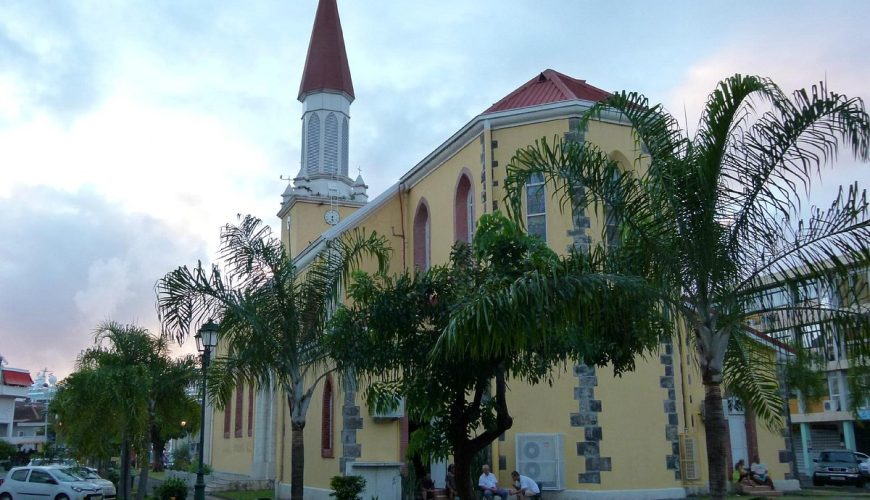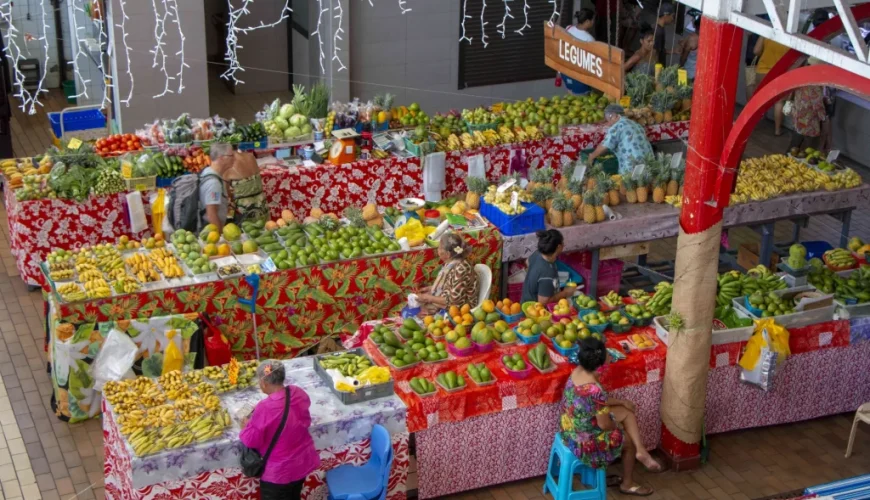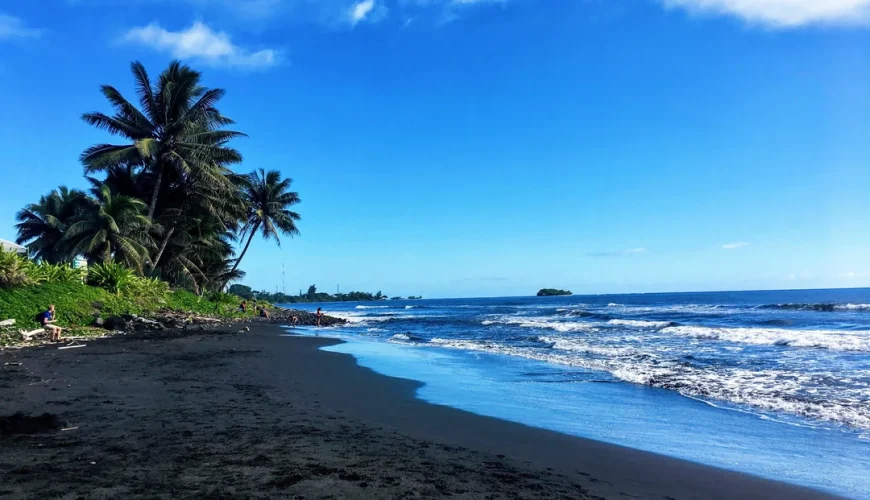Tahitian Dance
Unveiling the Magic of Tahitian Dance French Polynesia, a paradise of turquoise waters, swaying palm trees, and vibrant culture, beckons travelers with its captivating beauty. But beyond the postcard-perfect scenery lies a deeper layer of tradition – the mesmerizing art of Tahitian dance. This dynamic performance form, steeped in history and rich with symbolism, is more than just entertainment; it’s a rhythmic journey through Polynesian mythology, a celebration of life, and a window into the soul of the islands. Roots of Rhythm: A Legacy Passed Down Through Generations The origins of Tahitian dance stretch back centuries, with roots deeply embedded in Polynesian mythology. Legend tells of the goddess Hi’i-varea, who descended from the heavens to teach the people the art of dance. Early forms of the dance were used for religious ceremonies, storytelling, and celebrating victories in war. Over time, the dance evolved, incorporating influences from European missionaries and sailors. Missionaries initially tried to suppress the traditional dance due to its perceived sensuality. However, the Tahitian people cleverly adapted their dances, incorporating elements like longer skirts and slower movements while preserving the core essence of the form. Today, Tahitian dance holds a cherished place in Polynesian culture. It’s passed down through generations, with families teaching their children the intricate steps and rhythmic beats. From village festivals to prestigious competitions, Tahitian dance continues to be a vibrant expression of cultural pride and identity. A Story Told Through Movement: Unveiling the Dance Styles Tahitian dance, also known as « Ori Tahiti, » is a captivating blend of powerful movement, rhythmic drumming, and captivating storytelling. Two main styles dominate the dance landscape: Otea: This dynamic and energetic style traditionally performed by men, features vigorous footwork, powerful chest slaps, and dramatic gestures. The Otea tells stories of war, bravery, and hunting prowess. The dancers, often bare-chested and adorned with elaborate headpieces and belts, convey strength and agility through their movements. Mehe: This graceful and sensual style, primarily performed by women, showcases elegance and beauty. The dancers, adorned with vibrant flower crowns and colorful pareos, move their hips and hands in a fluid, mesmerizing rhythm. The Mehe tells stories of love, creation, and everyday life, captivating the audience with its subtle emotions and hypnotic movements. The Enchantment of Costumes: Beyond the Dance Steps The visual splendor of Tahitian dance is as captivating as the movements themselves. The costumes play a crucial role in conveying the story and highlighting the dancers’ skill and grace. Men: Traditional attire for Otea dancers can include colorful loincloths made from tapa cloth (bark cloth). They might wear elaborate feather headdresses or headbands adorned with shells and flowers. Some dancers wear ankle bracelets made of boar tusks or nacre shells, which add an audible rhythmic element as they move. Women: Mehe dancers wear brightly colored pareos (wraparounds) made from tapa cloth or cotton. The vibrant colours like red, yellow, and orange, symbolize joy and celebration. They adorn themselves with flower crowns (hei) made from fragrant plumeria or tiare flowers. These crowns not only add a touch of beauty but also infuse the performance with the intoxicating scent of Polynesia. The Pulse of the Performance: The Rhythm of the Toere The heartbeat of Tahitian dance is the toere, a traditional drum carved from a hollowed tree trunk. Skilled drummers, known as « toere pu, » use a variety of sticks and their hands to create intricate rhythmic patterns. These rhythms not only guide the dancers’ movements but also narrate the story being told through the dance. The toere is often accompanied by the powerful chanting of the « pupu himene, » a chorus that provides a vocal counterpoint to the drumming. The chanting adds another layer of storytelling and emotional depth to the performance. Witnessing the Magic: Where to Experience Tahitian Dance Tahitian dance performances are accessible to visitors throughout French Polynesia. Many hotels and cultural centers host regular dance evenings, allowing tourists a glimpse into this vibrant tradition. For a more immersive experience, consider attending a Heiva festival. Held annually in July, these vibrant celebrations showcase the best of Tahitian culture, including dance competitions, craft demonstrations, and traditional food stalls. Beyond Entertainment: A Cultural Journey for All A Tahitian dance performance is more than just an entertaining spectacle; it’s a journey into the heart and soul of Polynesian culture. Witnessing the dancers’ grace, the rhythmic energy of the toere, and the vibrant costumes is a sensory feast that leaves a lasting impression.
Notre Dame Cathedral
Notre Dame de Papeete: A European Enclave in the Polynesian Paradise Papeete, the vibrant capital of French Polynesia, is a tapestry woven from lush landscapes, turquoise waters, and rich Polynesian culture. Nestled amidst the swaying palm trees and bustling markets stands a striking landmark – the Cathédrale de Notre Dame de Papeete (Notre Dame Cathedral). This majestic structure, a splash of European influence amidst the Polynesian paradise, offers a glimpse into the island’s fascinating colonial past. A Legacy of French Colonialism The story of Notre Dame Cathedral begins in the mid-19th century, a period marked by French expansion into the Pacific Islands. In 1842, the Kingdom of Tahiti became a French protectorate, paving the way for a wave of missionaries and colonial influence. Recognizing the importance of religion in establishing a foothold, French authorities began construction of the cathedral in the 1850s. It was completed in 1875, becoming the oldest Catholic church in Tahiti and a symbol of French presence on the island. Architectural Grandeur: A Blend of Styles Notre Dame Cathedral is a testament to the architectural prowess of the colonial era. Designed in the neo-classical style, the cathedral boasts a symmetrical facade with clean lines and imposing columns. The white coral stone exterior gleams in the tropical sun, creating a stark contrast to the vibrant blue sky and lush greenery that surrounds it. While the overall style is European, subtle Polynesian influences can be found throughout the cathedral. The hexagonal bell tower, a prominent feature, is topped with a pointed red spire, reminiscent of a Tahitian tapa cloth design. This unique blend of styles reflects the cultural and historical crossroads at which the cathedral was built. Stepping Inside: A World of Tranquility Crossing the threshold of Notre Dame Cathedral is like entering a haven of peace and tranquility. The cool air, a welcome respite from the tropical heat, and the hushed tones of visitors create a sense of reverence. The soaring high ceilings and spacious nave contribute to the feeling of grandeur. A Feast for the Eyes: Stained Glass and Artistic Masterpieces Sunlight streams through vibrant stained-glass windows, casting colorful patterns onto the cathedral floor. The windows depict biblical scenes and religious icons, adding a touch of artistic mastery to the sacred space. Look closer, and you might find subtle details that weave Polynesian culture into the European tapestry. Some windows feature darker skin tones and traditional Tahitian clothing on biblical figures, reflecting the efforts to connect with the local population through familiar imagery. Murals with a Message: The Stations of the Cross The Stations of the Cross, a series of 14 depictions of Jesus’ journey to crucifixion, adorn the walls of the cathedral. Unlike traditional European renditions, these paintings incorporate elements of both Tahitian and Roman cultures. The figures wear a blend of European and Polynesian clothing, reflecting the cultural crossroads of French Polynesia. This unique portrayal serves as a reminder of the cathedral’s role in bridging the gap between two cultures. A Revered Icon: The Carved Madonna and Child One of the most captivating features of Notre Dame Cathedral is a life-size statue of the Madonna and Child. Carved from wood, the sculpture features a European Virgin Mary with a gentle expression. However, the Christ Child cradles a breadfruit instead of a traditional grape cluster. This subtle detail, a nod to a staple food in Polynesian culture, personalizes the statue and resonates with the local population. Respectful Etiquette: A Place of Worship Notre Dame Cathedral is an active place of worship for the Catholic community in Papeete. When visiting, it’s important to dress modestly and maintain a respectful demeanor. Be mindful of ongoing services and keep noise levels down to ensure a peaceful environment for worshippers. Beyond Religious Significance: A Cultural Gem Notre Dame Cathedral transcends its role as a place of worship. It stands as a testament to a bygone era, a time when European influence shaped the island’s landscape and culture. Today, the cathedral serves as a cultural hub, attracting visitors and locals alike who come to admire its beauty and learn about its fascinating history. A Symbol of Harmony Notre Dame Cathedral stands as a beautiful symbol of cultural harmony. The blend of European architecture and subtle Polynesian influences reflects the complex history of French Polynesia. It’s a reminder of the ways different cultures can coexist and even enrich each other. A Lasting Impression: A Journey Through Time Stepping out of Notre Dame Cathedral, you might feel transported back in time. The architecture and art within the walls offer a window into the island’s colonial past. However, the presence of locals seeking solace and the vibrant streets outside the cathedral doors serve as a reminder of the building’s enduring relevance in the present day.
The Marche (Market)
Papeete, the vibrant capital of French Polynesia, pulsates with energy. But beyond the rhythmic hum of scooters and the melodic strains of ukulele music, another kind of vibrancy awaits: the Marche (market). This sprawling marketplace is more than just a place to buy groceries; it’s a sensory explosion, a kaleidoscope of colors, fragrances, and cultural immersion. Here, amidst the cacophony of friendly bartering and the laughter of locals, you’ll discover the true essence of French Polynesia. A Feast for the Eyes: A Tapestry of Tropical Abundance Stepping into the Marche is like entering a living postcard. Towering displays of fresh produce erupt in a riot of color. Mountains of pineapples, their golden skin catching the sunlight, jostle for space with ruby red tomatoes and glistening bunches of purple grapes. Exotic dragonfruit, with its fuchsia skin and white flesh speckled with black seeds, adds a touch of the unexpected. Local mangoes, their aroma a heady mix of sweetness and spice, beckon you closer. The bounty of the sea is just as impressive. Glistening fish of every size and color are displayed on beds of ice. Pearlescent tuna, vibrant red snapper, and spiky lobsters are a testament to the richness of the surrounding waters. Local fishermen often bring in their daily catch, their weathered faces etched with pride and the salty spray of the ocean. A Symphony of Scents: A Journey Through French Polynesia The Marche is a symphony of scents, each stall offering a unique olfactory experience. The sweet, heady aroma of vanilla beans mingles with the earthy fragrance of fresh ginger and turmeric. The sharp tang of limes and the delicate floral note of tiare Tahiti flowers create a captivating blend. Spice vendors tempt you with the promise of exotic culinary adventures: fiery chilies, fragrant cloves, and earthy nutmeg fill the air. Beyond the produce, the stalls overflow with handcrafted treasures. The sweet, woody scent of Tahitian monoi oil, a blend of coconut and tiare flowers, hangs heavy in the air. Woven baskets, their natural materials emitting a subtle earthy fragrance, entice you to touch and explore. A Cultural Tapestry: Where Traditions Come Alive The Marche is a vibrant tapestry of cultures. Local women, adorned with colorful pareos and fragrant flower crowns, sell their wares with infectious smiles and friendly banter. The air thrums with the rhythmic cadence of Polynesian languages, creating a unique sonic landscape. Artists showcase their talents, displaying intricate wood carvings and vibrant tapa cloths, a traditional Polynesian fabric made from bark. Watch in awe as skilled artisans create beautiful shell jewelry, their nimble fingers weaving stories into each piece. More Than Just Shopping: A Window into Local Life The Marche is much more than a shopping destination. It’s the beating heart of Papeete, a place where locals gather to socialize, catch up on gossip, and share a laugh. Here, you’ll witness the warmth and hospitality that are hallmarks of Polynesian culture. Don’t be afraid to interact with the vendors; their smiles and willingness to answer your questions will add an unforgettable layer to your market experience. Unveiling the Culinary Delights: From Fresh Ingredients to Local Delicacies The Marche is a treasure trove for aspiring chefs and food enthusiasts. Here, you can find all the ingredients needed to create a delicious Polynesian feast. Whether you’re tempted by the vibrant red of fresh tuna for a delectable poke bowl, or the promise of a sweet pineapple for a refreshing fruit salad, the fresh produce is guaranteed to tantalize your taste buds. Don’t miss the opportunity to sample some local delicacies. Many stalls offer pre-made dishes like poisson cru (raw fish marinated in lime juice and coconut milk), ma’a Tahiti (a traditional Tahitian stew), and fresh fruit skewers. Take a bite and let the explosion of flavors transport you to the heart of Polynesia. Capturing the Essence: A Photogenic Paradise The Marche is a photographer’s paradise. Every corner offers a unique composition, a burst of color waiting to be captured. From the towering displays of fruit to the intricate handiwork of local artisans, the scene is a feast for the eyes and a photographer’s dream. Don’t forget to capture the smiles of the vendors and the lively energy that permeates the market. Beyond the Shopping: Stepping into Local Traditions The Marche offers a glimpse into the rich traditions of French Polynesia. Many stalls sell Tahitian black pearls, renowned for their unique luster and depth of color. Learn about the traditional pearl farming methods and witness the craftsmanship that goes into creating exquisite pearl jewelry.
Black Sand Beaches
Papeete, the vibrant capital of French Polynesia, enchants visitors with its postcard-perfect scenery. Beyond the swaying palm trees and idyllic lagoons lies a unique feature: black sand beaches. These volcanic remnants, a stark contrast to the usual white sand havens, create a dramatic and unforgettable landscape. While the texture might not be the epitome of plush comfort, Papeete’s black sand beaches offer an experience unlike any other, captivating beachgoers with their raw beauty and surprising benefits. Formed by the erosion of volcanic rock, black sand beaches are a testament to Tahiti’s fiery past. The island chain is nestled atop the Polynesian Hotspot, a region of volcanic activity responsible for the creation of these islands. Over millennia, volcanic eruptions spewed basalt, a dark, iron-rich rock. As relentless waves pounded the shores, they pulverized the basalt into the fine black sand that graces Papeete’s coastline. While the absence of the usual soft, white sand might come as a surprise to some, Papeete’s black sand beaches hold a certain charm. The dark sand absorbs the sun’s rays more readily, making the beach a haven for those seeking a quicker tan. However, be warned – the sand can get quite hot underfoot, so packing beach sandals is a must. The true magic of Papeete’s black sand beaches unfolds when you set your gaze upon the water. The contrast between the jet-black sand and the turquoise water is nothing short of breathtaking. The vibrant hues of the ocean seem to intensify against the dark backdrop, creating a scene of unparalleled beauty. This visual symphony is a photographer’s dream, offering endless possibilities to capture the essence of Tahiti’s unique character. Among Papeete’s black sand gems, two beaches stand out: Plage de Vai’eta and Plage de Lafayette. Plage de Vai’eta: A Slice of Paradise in the Heart of the City Nestled along the waterfront, Plage de Vai’eta is a stone’s throw away from the bustling heart of Papeete. This easily accessible beach offers a convenient escape for those seeking a quick dose of relaxation amidst their urban exploration. The black sand here is relatively fine, making it more comfortable for walking and sunbathing compared to other black sand beaches. Plage de Vai’eta boasts a lively atmosphere, particularly on weekends when locals gather for picnics, beach volleyball games, and refreshing dips in the cool water. Food stalls line the nearby promenade, offering a variety of snacks and refreshments to fuel your beach day. Kayaking and paddleboarding are popular activities here, allowing you to explore the coastline from a different perspective. For those seeking a touch of history, Plage de Vai’eta is a short walk from the Papeete Marina. Here, you can marvel at traditional Tahitian sailing canoes and even embark on a cultural excursion aboard one. Plage de Lafayette: A Serene Escape for Nature Enthusiasts Venture a little further from the city center, and you’ll be rewarded with the serenity of Plage de Lafayette. This secluded beach offers a more tranquil experience, perfect for those seeking to unwind amidst the beauty of nature. The black sand here is a bit coarser than Plage de Vai’eta, but the stunning scenery makes it all worthwhile. Plage de Lafayette is a haven for sunbathers and snorkelers. The calm waters and vibrant coral reefs teeming with colorful fish create an underwater paradise waiting to be explored. If you’re lucky, you might even spot sea turtles gliding gracefully through the clear water. Beyond the sun, sand, and sea, Plage de Lafayette offers a glimpse into the island’s rich cultural heritage. Several ancient Polynesian marae (religious sites) can be found here, offering a chance to connect with the island’s spiritual past. Unexpected Benefits of Black Sand Beyond aesthetics, Papeete’s black sand beaches boast some surprising benefits. The volcanic rock that forms the sand is believed to have therapeutic properties. The gentle heat radiating from the sand is said to be beneficial for easing muscle tension and promoting relaxation. Additionally, the black sand is thought to have exfoliating properties, leaving your skin feeling smooth and refreshed after a day at the beach. A Day at the Black Sand Beach: Making Memories in Paradise Whether you choose the lively Plage de Vai’eta or the serene Plage de Lafayette, a day spent on Papeete’s black sand beaches promises an unforgettable experience. Pack your beach essentials – sunscreen, a hat, a swimsuit, and a beach towel – and get ready to soak up the sun, the sand, and the unique charm of French Polynesia.




